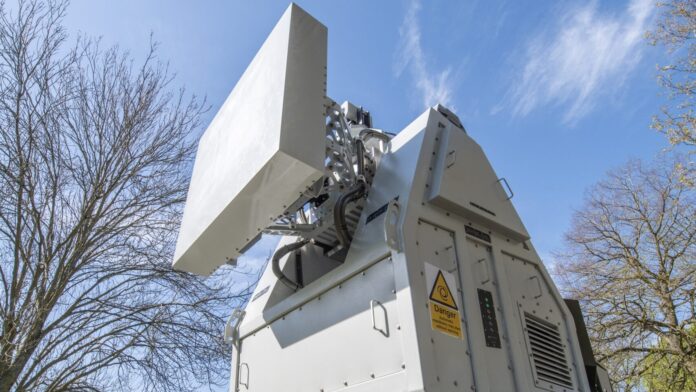
Britain says it has started development of a “cutting edge” Radio Frequency Directed Energy Weapon (RFDEW) capable of neutralizing drone swarms at just 10 pence (19 cents) a shot. The new weapon system beams radio waves to “disrupt or damage” electronic equipment of enemy vehicles “causing them to stop in their tracks or fall out of the sky,” according to a Wednesday UK MoD statement, Breaking Defense reports.
Once development of RFDEW advances, it will be capable of operating in excess of 1 KM and detect, track and engage a variety of threats across air, land and sea domains, per the announcement.
“At only 10p per shot fired, the RFDEW beam is a significant cost-effective alternative to traditional missile-based, air defence systems, capable of downing dangerous drone swarms with instant effect,” noted the MoD. “The high level of automation also means the system itself can be operated by a single person.”
The system is also suited to protecting “critical assets and bases,” and can be integrated on a number of different military vehicles.
London did not specifically mentioned which industry partners are involved in the design and development of the weapon, but said a joint team made up of Defence Science and Technology Laboratory (Dstl), an innovation hub, Defence Equipment and Support (the UK’s military procurement arm) and Project Hersa (UK industry) are all collaborating.
Next steps for the program will cover British soldier field tests this summer, ahead of entry to service in “the coming years.”From ISRAEL AEROSPACE INDUSTRIES
The UK has touted the advantages of other low cost shot per kill programs, most recently detailing successful airborne targeting tests of the DragonFire laser directed energy weapon (LDEW), held at the UK MoD’s Hebrides range, northwest Scotland.
DragonFire is said to cost less than £10 ($13) per shot and was first stood up as a £100 million ($127 million) program in 2017.
At the time of the airborne targeting tests, a MoD spokesperson told Breaking Defense that no Royal Navy ship had yet been selected to host the weapon “at this point of the trials,” but “it’s possible the laser would be in service before the end of the decade.”
On the other side of the Atlantic, efforts by the US Navy to develop more cost effective solutions to shootdown cheap drones or antiship missiles instead of using expensive, conventional munitions are similarly ramping up.
Reflecting on Navy operations in the Red Sea earlier this week, Rear Adm. Fred Pyle said the service “absolutely” needs to invest in cheaper equipment to down drones.
“We’re working towards that end, and we have some solutions that I can’t go into, but we are going to get after finding more cost-effective ways to address those lower-end threats,” he added.



